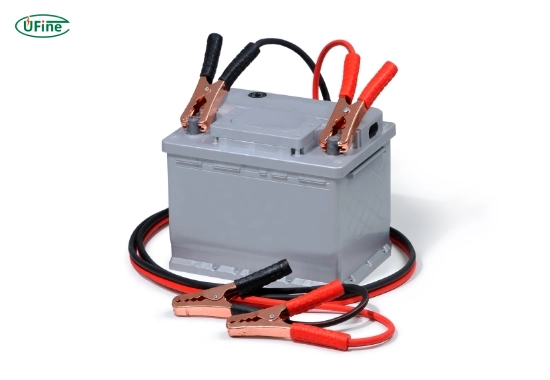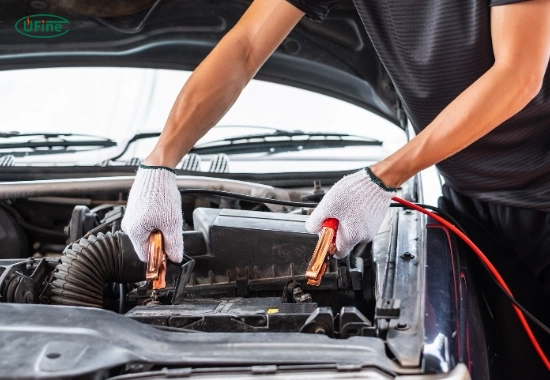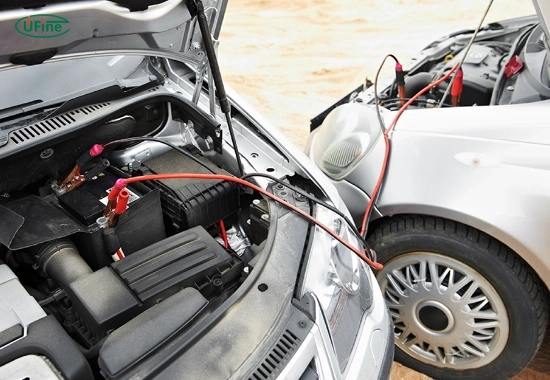Knowing how to charge a car battery is essential for every vehicle owner. Whether your battery is dead due to neglect or simply because it has reached the end of its life, being able to recharge it can save you time and money. This article will discuss various methods for charging lead-acid and lithium-ion car batteries, the tools you need, and some helpful tips to ensure safety and efficiency.
Part 1. What is a car battery?
A car battery is a crucial part of your vehicle’s electrical system. It stores electrical energy and provides the power needed to start the engine and run electrical accessories when the engine is off. Most cars use lead-acid batteries, which consist of lead plates submerged in an electrolyte solution of sulfuric acid and water. However, many modern electric vehicles (EVs) and hybrids use lithium-ion batteries. These batteries are lighter, have a higher energy density, and can be more efficient than traditional lead-acid batteries.
Understanding the differences between these two types of batteries is important when learning how to charge them. Conventional vehicles often use lead-acid batteries, while electric vehicles mostly use lithium-ion batteries because they last longer and charge faster.
Part 2. Why do car batteries need charging?
Car batteries may need charging for several reasons:
- Frequent short trips: If you only take short trips, your battery may need more time to recharge fully. This can lead to gradual depletion over time.
- Electrical drain: Leaving lights on or using accessories when the engine is off can drain the battery quickly.
- Age: As batteries age, their ability to hold a charge diminishes. A typical lead-acid battery lasts about three to five years, while lithium-ion batteries can last longer but degrade over time.
- Extreme temperatures: Cold weather can significantly reduce battery efficiency. On the other hand, excessive heat can cause fluid evaporation in lead-acid batteries, leading to damage.
Part 3. How do you know if your car battery needs charging?
Several signs indicate your car battery may need charging:
- Slow engine crank: If the engine slowly cranks when you turn the key, it may be a sign of a weak or dead battery.
- Dimming lights: If your headlights significantly dim when you start the engine, it could indicate insufficient battery power.
- Check engine light: A warning light on your dashboard may signal an issue with your battery or charging system.
- Corrosion: Visible corrosion around the battery terminals can affect performance and indicate that it may need maintenance or charging.
Part 4. What tools do you need to charge a car battery?
To charge a car battery safely and effectively, you’ll need several tools:
- Battery charger: Choose a charger compatible with your battery type (lead-acid or lithium-ion). Smart chargers are ideal as they automatically adjust voltage levels based on your battery’s needs.
- Jumper cables: These are useful for jump-starting a dead battery using another vehicle’s power.
- Safety gloves and goggles: Protect yourself from acid splashes and sparks that can occur during charging.
- Multimeter (optional): This tool helps check voltage levels before and after charging, ensuring your battery functions properly.
Part 5. How to charge a car battery using a charger?
Charging a car battery with a charger involves several steps:
Safety first: Before handling the battery, wear gloves and goggles to protect against acid splashes.
Locate the charger: Set up your charger in a well-ventilated area away from flammable materials like gasoline or oil.
Connect the charger:
- Attach the positive (red) clamp to the battery’s positive terminal.
- Attach the negative (black) clamp to an unpainted metal surface on the vehicle (not directly on the negative terminal).
Set the charger: Adjust settings according to your charger’s instructions (usually selecting voltage and amperage). Experts often recommend lower amperage settings for slower, safer charging of lead-acid batteries.
Start charging:
- Plug in the charger and turn it on.
- Monitor the charging process; most chargers have indicators showing when charging is complete.
- Be sure to charge for lithium-ion batteries appropriately, as this can damage them.
Disconnect safely:
- Turn off the charger before removing any clamps.
- Remove the negative clamp first, followed by the positive clamp.
- Store your equipment properly after use.
Part 6. How to jump-start a car with another vehicle?
If you don’t have a charger available, you can jump-start your car using another vehicle:
Position vehicles: Park both vehicles close enough for jumper cables to reach, but ensure they don’t touch each other to avoid electrical shorts.
Connect jumper cables:
- Attach one end of the red cable to the dead battery’s positive terminal.
- Connect the other end of the red cable to the positive terminal of the working battery.
- Attach one end of the black cable to the working battery’s negative terminal.
- Connect the other end of the black cable to an unpainted metal surface on the dead vehicle (not directly on its negative terminal).
Start both vehicles:
- Start the working vehicle first and let it run for a few minutes.
- Attempt to start your dead vehicle after waiting a few moments.
Disconnect cables carefully:
- Remove cables in reverse order: black from your vehicle, black from the donor vehicle, red from the donor vehicle, and red from your vehicle.
- Ensure that no clamps touch each other during disconnection.
Replacement Lithium Battery for Jump Starter Pack
Part 7. Tips for maintaining car battery health
To prolong your car battery’s life and prevent future issues, consider these maintenance tips:
- Regular inspections: Check terminals regularly for corrosion and clean them with a mixture of baking soda and water if necessary.
- Keep it charged: Drive your vehicle regularly or use a trickle charger if you park it for extended periods without use.
- To avoid extreme temperatures, park in shaded areas during hot weather and keep your vehicle in garages during cold weather.
- Test regularly: Use a multimeter or take your vehicle to a professional for regular testing of your battery’s health—especially before winter months, when cold weather can significantly impact performance.
Part 8. FAQs
-
What type of charger should I use?
Use a smart charger. It adjusts voltage levels to match your battery’s needs, prevents overcharging, and works safely with lead-acid and lithium-ion batteries. -
Can I charge my car battery while it’s still in the car?
Yes, you can charge most car battery types while installed in your vehicle. However, for safety reasons, ensure that all electrical components are turned off before connecting any chargers or jumper cables. -
How long does it take to charge a car battery?
Charging time varies based on charger type and battery condition but typically ranges from 4 to 24 hours for standard chargers; smart chargers may take less time due to their efficiency in managing power delivery based on real-time needs. -
Is it safe to jump-start my car alone?
While it’s safer with another person present who can assist if something goes wrong, you can jump-start alone if you follow safety protocols carefully and ensure proper connections are made without rushing through any steps. -
What should I do if my car won’t start after charging?
Suppose your vehicle still doesn’t start after charging. In that case, it may indicate more profound issues, such as a faulty alternator or starter motor, requiring professional diagnosis and repair services.
Related Tags:
More Articles

How to Choose the Best Floor Scrubber Battery for Commercial Cleaning?
Selecting the ideal floor scrubber battery ensures a long runtime, rapid charging, and minimal maintenance for efficient commercial cleaning operations.
Battery for Blower vs Battery for Leaf Vacuum: Which One Should You Choose?
Battery for blower vs leaf vacuum—learn the key differences in power, fit, and runtime to choose the right battery for your outdoor tool needs.
How to Choose the Right Battery for Blower?
Choosing the right blower battery? Consider voltage, capacity, chemistry & usage. This guide helps match the best battery for peak performance.
How to Choose the Best Insulated Battery Box for Lithium Batteries?
Choosing the Best Insulated Battery Box for Lithium Batteries? Discover key factors such as size, material, and safety for optimal protection and performance.
7 Critical Elements on a Lithium Battery Shipping Label
What must be on a lithium battery shipping label? Learn 7 key elements to ensure safety, legal compliance, and correct handling across all transport modes.






